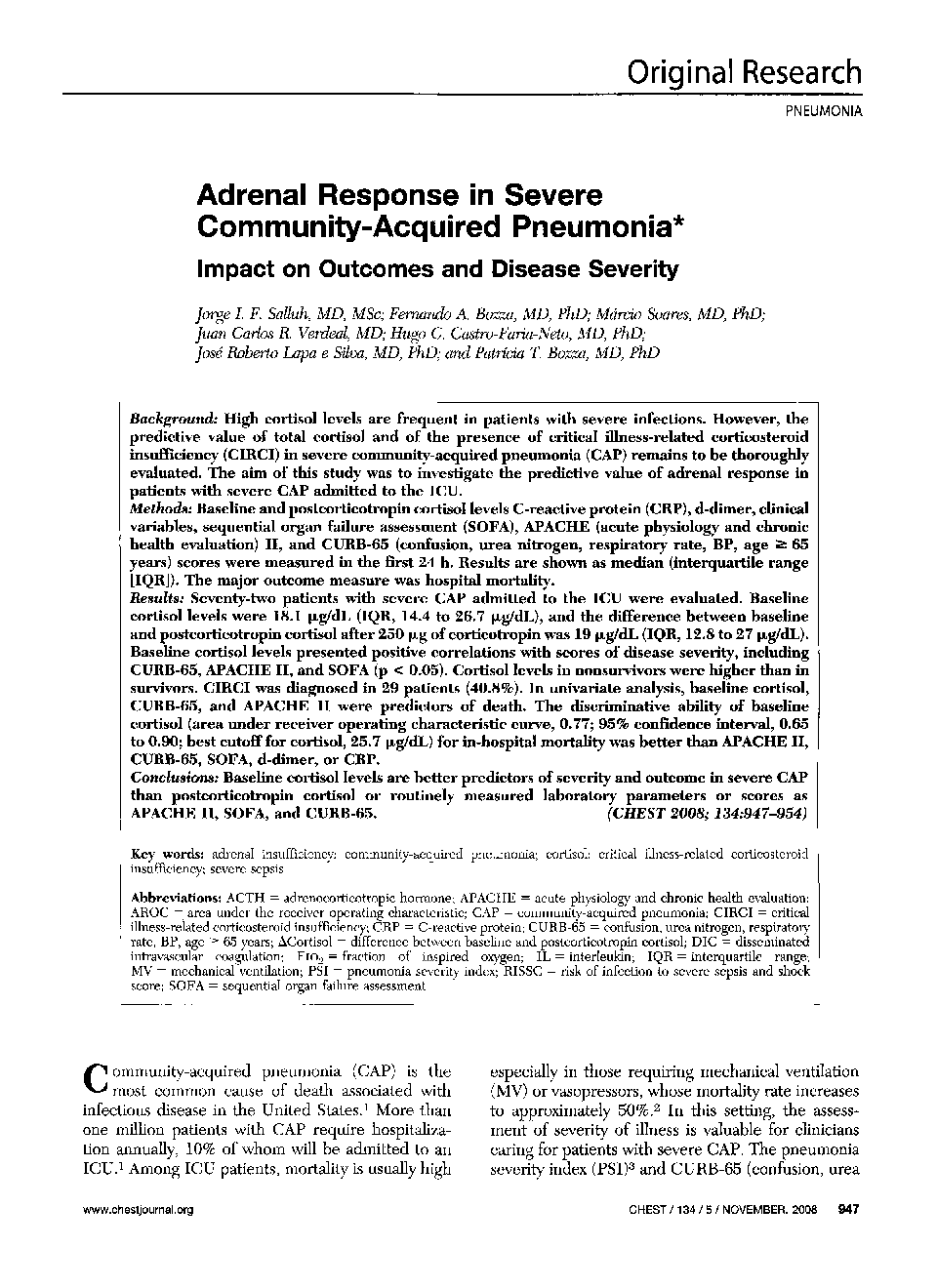| کد مقاله | کد نشریه | سال انتشار | مقاله انگلیسی | نسخه تمام متن |
|---|---|---|---|---|
| 2902798 | 1173380 | 2008 | 8 صفحه PDF | دانلود رایگان |

BackgroundHigh cortisol levels are frequent in patients with severe infections. However, the predictive value of total cortisol and of the presence of critical illness-related corticosteroid insufficiency (CIRCI) in severe community-acquired pneumonia (CAP) remains to be thoroughly evaluated. The aim of this study was to investigate the predictive value of adrenal response in patients with severe CAP admitted to the ICU.MethodsBaseline and postcorticotropin cortisol levels C-reactive protein (CRP), d-dimer, clinical variables, sequential organ failure assessment (SOFA), APACHE (acute physiology and chronic health evaluation) II, and CURB-65 (confusion, urea nitrogen, respiratory rate, BP, age ≥ 65 years) scores were measured in the first 24 h. Results are shown as median (interquartile range [IQR]). The major outcome measure was hospital mortality.ResultsSeventy-two patients with severe CAP admitted to the ICU were evaluated. Baseline cortisol levels were 18.1 μg/dL (IQR, 14.4 to 26.7 μg/dL), and the difference between baseline and postcorticotropin cortisol after 250 μg of corticotropin was 19 μg/dL (IQR, 12.8 to 27 μg/dL). Baseline cortisol levels presented positive correlations with scores of disease severity, including CURB-65, APACHE II, and SOFA (p < 0.05). Cortisol levels in nonsurvivors were higher than in survivors. CIRCI was diagnosed in 29 patients (40.8%). In univariate analysis, baseline cortisol, CURB-65, and APACHE II were predictors of death. The discriminative ability of baseline cortisol (area under receiver operating characteristic curve, 0.77; 95% confidence interval, 0.65 to 0.90; best cutoff for cortisol, 25.7 μg/dL) for in-hospital mortality was better than APACHE II, CURB-65, SOFA, d-dimer, or CRP.ConclusionsBaseline cortisol levels are better predictors of severity and outcome in severe CAP than postcorticotropin cortisol or routinely measured laboratory parameters or scores as APACHE II, SOFA, and CURB-65.
Journal: Chest - Volume 134, Issue 5, November 2008, Pages 947–954